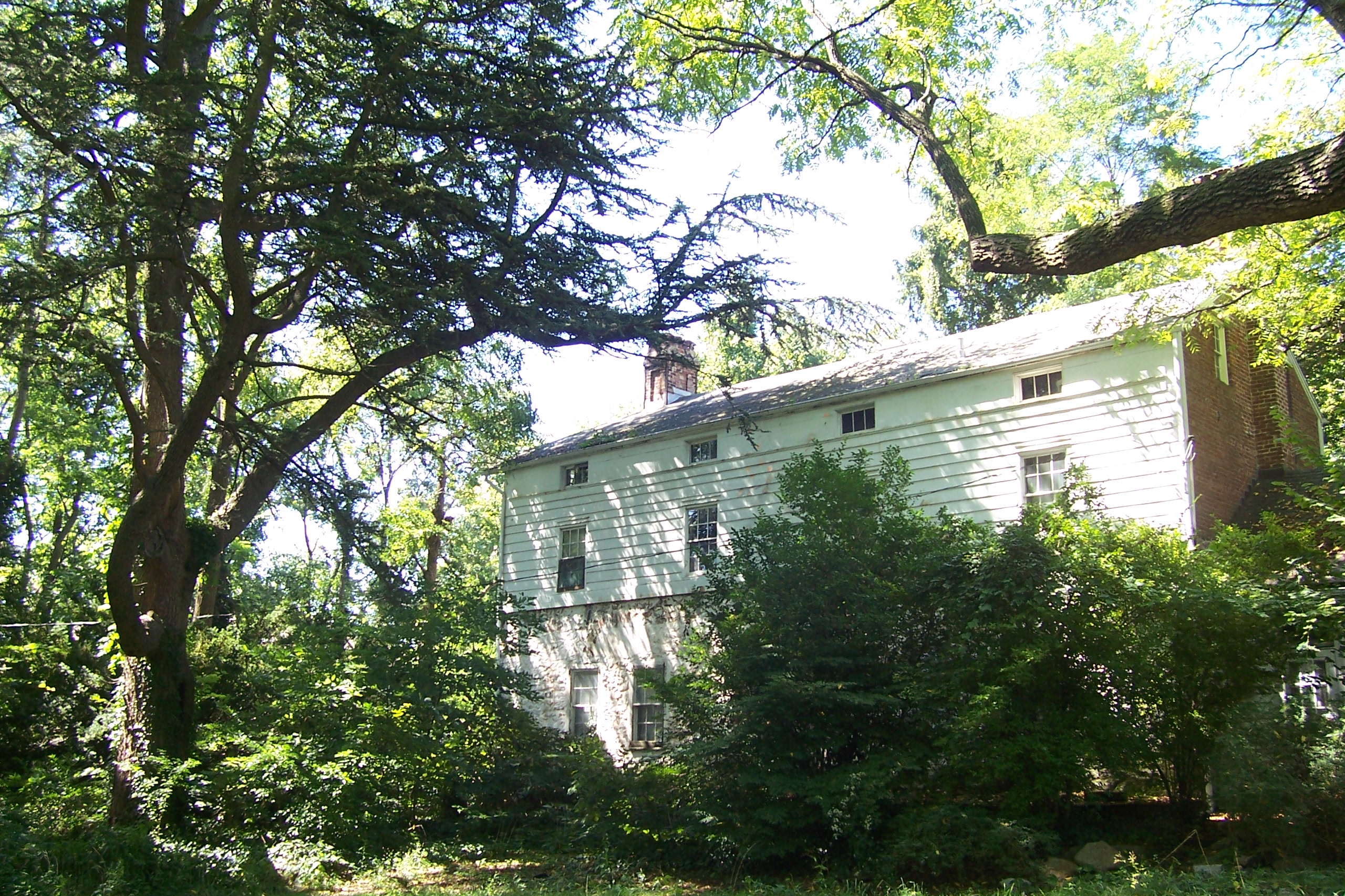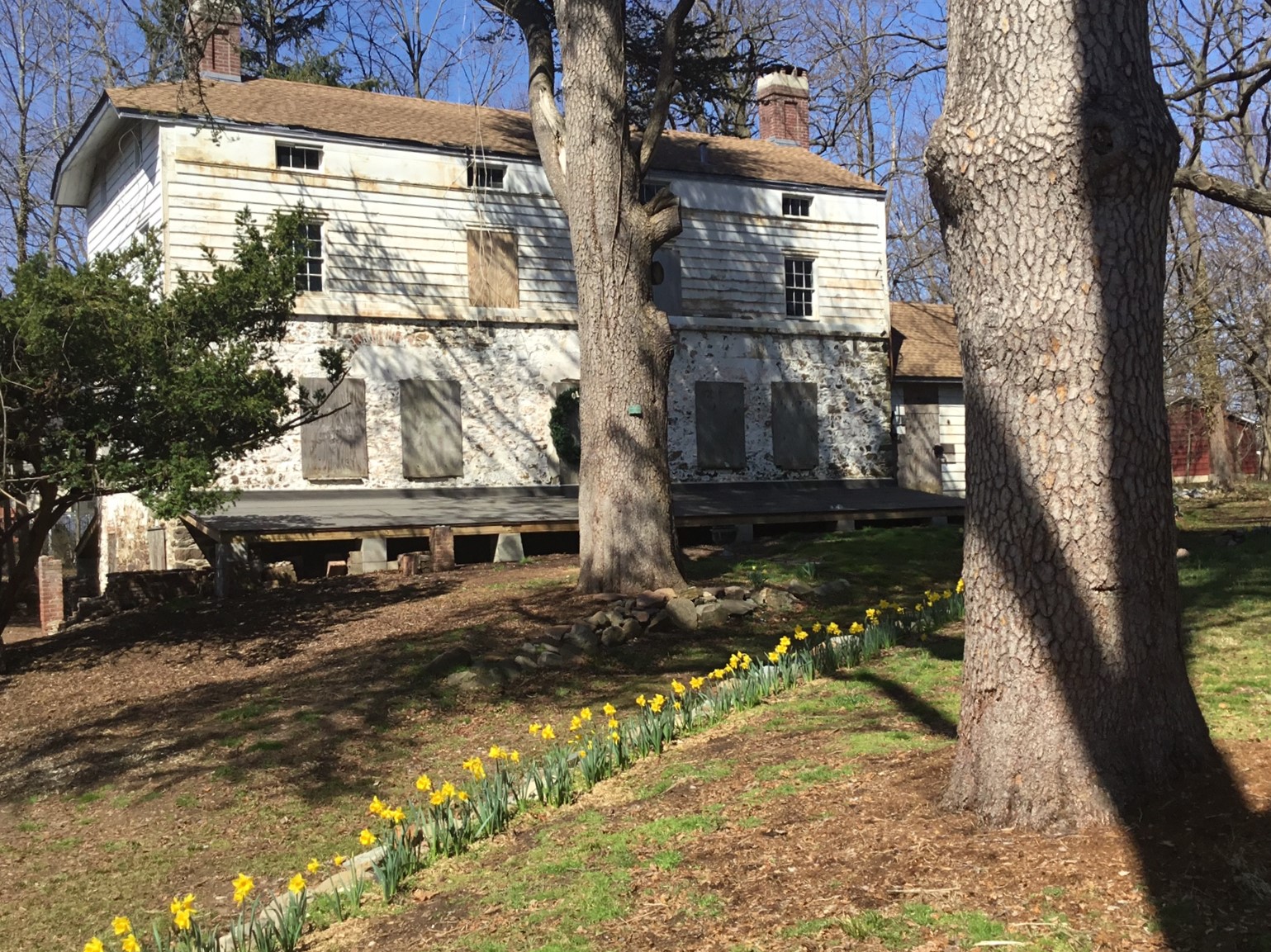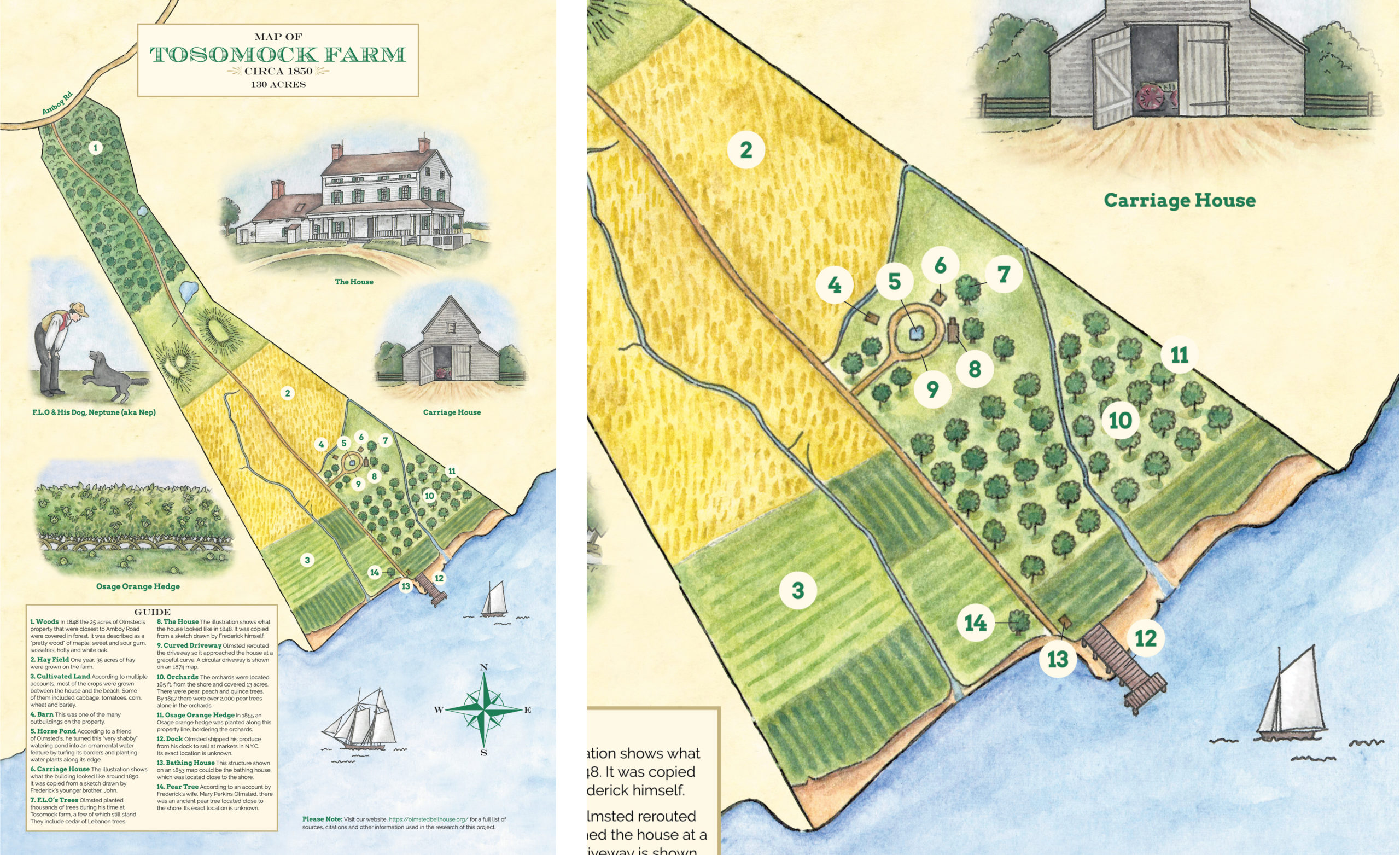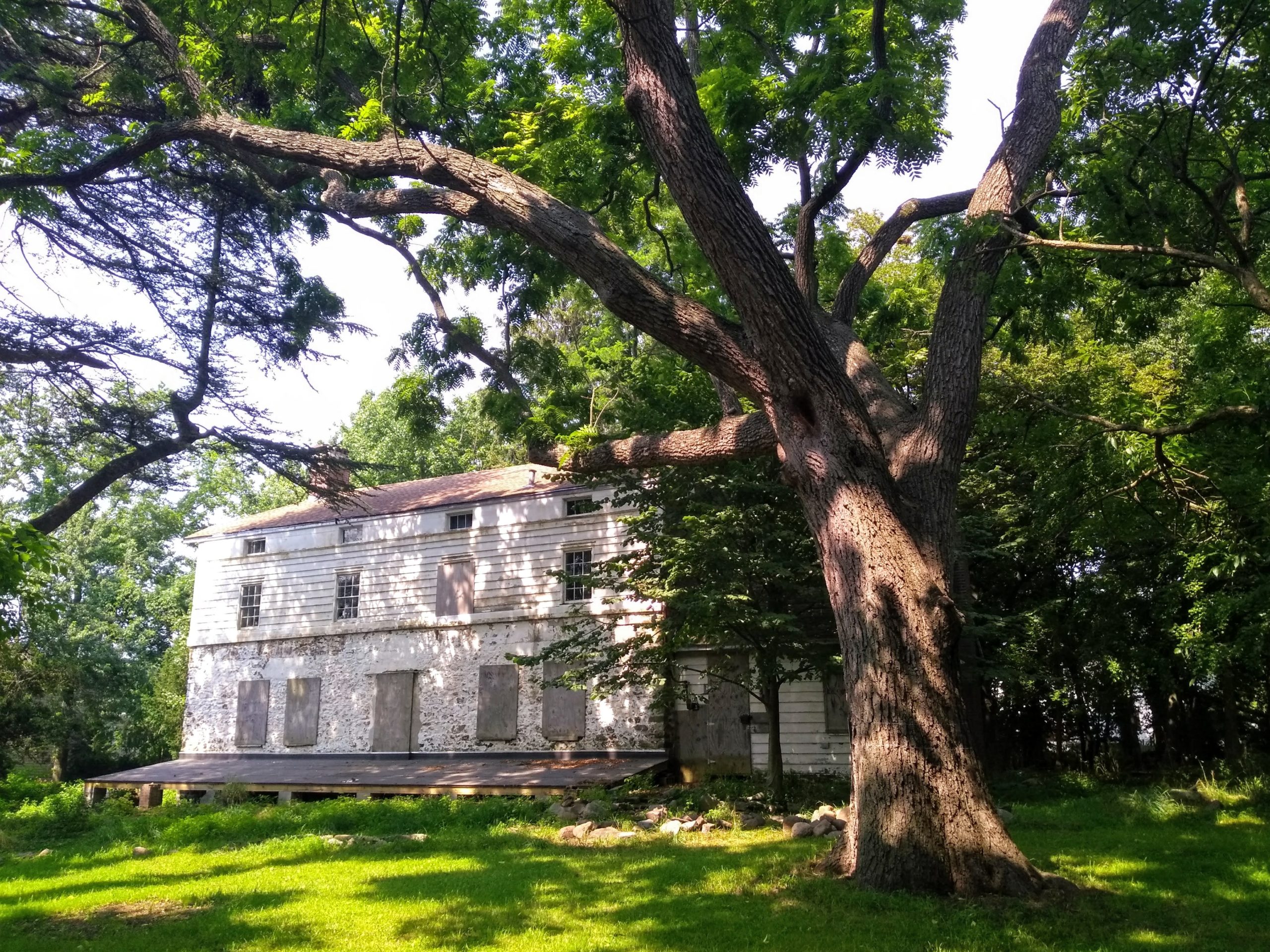
A two-story farmhouse and two acres are all that remain of the original 125-acre ornamental farm that Frederick Law Olmsted managed in the 1830s that shaped much of his later career. Known as Tosomock Farm, the historic landmark overlooks Raritan Bay and is now preserved as the Olmsted-Beil House. Tosomock Farm functioned as an “experimental” farm where Olmsted tried out design principles, assessed various crops and learned more about arboriculture.
As Olmsted biographer Laura Wood Roper notes:
Fred transfigured his new home with a few simple improvements. He moved the barns and outhouses out of sight behind a knoll; he brought the drive in so that it approached the house by a graceful curve; he turfed the border of the pond, set water plants, and shielded the water from contamination; and by the time he had lived there three years, he had planted a variety of ornamental and forest trees — ginkgo, black walnut, mulberry, English and American elm, English beech, cedars of Lebanon, several varieties of linden and a hedge of Osage orange.
On the farm, he grew vegetables and more than 5,000 pear trees. And he began thinking in earnest about landscape architecture (a term Mr. Olmsted himself popularized). In so many ways, the experiments he undertook at the farm became the foundation of his work as a landscape architect — whether it was employing curving paths as a prominent landscape design feature or taking his knowledge and understanding of natural systems to convert swamps and fetid marshes into beautiful green spaces that addressed sanitation. These are features still found today across Olmsted spaces throughout the country.
Olmsted’s life at the farm is also noteworthy because of the friends he made. It was at Tosomock Farm that Olmsted first met William Vanderbilt, the father of George Vanderbilt. Thirty years later, George Vanderbilt employed Olmsted — by then the most prominent landscape architect of the day — to design Biltmore and to establish another scientific experiment, this time a scientific forest. It was at Tosomock Farm that Olmsted met George Putnam who later published Olmsted’s first book, Walks and Talks of an American Farmer, an account of Olmsted’s walking tour through England.
At Tosomock Farm, Olmsted also began to display what became a life-long dedication to social reform. He vigorously planned and promoted a County Agricultural Society on Staten Island “… to increase the profit of our labor — enhance the value of our lands — throw a garment of beauty around our homes, and, above all, and before all, materially promote Moral and Intellectual Improvement — instructing us in the language of Nature … .”
In no uncertain terms, life in the Staten Island farmhouse played a transformative role in the development of a unique American innovator. That’s why Olmsted 200 and others supported efforts in 2020 to add the Olmsted Farmhouse to the New York State and National Historic Registers. We were delighted to receive good news of their addition to these lists at the close of 2020.
Today, Friends of the Olmsted-Beil House are working hard to build the support necessary to restore the property and open the farmhouse to visitors. If you would like to learn more, visit Friends of Olmsted-Beil House, a member of NAOP’s Olmsted Network.











